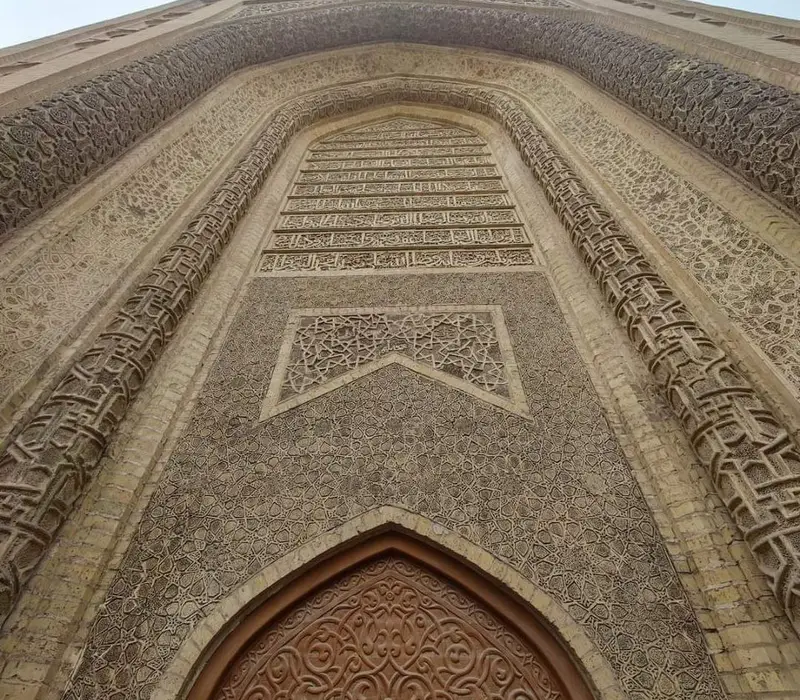Al-Mustansiriya School: A Glimpse into the Golden Era of the Abbasid Empire

Al-Mustansiriya School, established in 1233 CE by the Abbasid Caliph Al-Mustansir Billah, stands as one of the most significant academic and cultural institutions of medieval Baghdad. Located on the eastern bank of the Tigris River in the Al-Rusafa district, this institution not only provided higher education but also demonstrated the architectural excellence of the Abbasid era. The Mustansiriya School was renowned for its scientific, religious, and literary contributions, as well as for combining all four Sunni schools of Islamic law under one roof—a unique feature at the time.
---
Architectural Brilliance and Decorative Mastery
The building of Al-Mustansiriya School is an outstanding representation of Abbasid architectural development, showcasing the mastery of craftsmen and the advanced construction techniques of the period. The intricate decorative patterns and inscriptions that adorn the walls, corridors, and interiors, especially inside the mosque within the school, reflect the artistic brilliance of the era.
The Mosque and Its Architectural Innovations
The mosque of Al-Mustansiriya is a remarkable structure within the school, where the Abbasid architects utilized the strategic location to create a harmonious space for worship. One of the most fascinating architectural elements is the dome-shaped roof, constructed without the use of reinforced iron, relying solely on precise engineering techniques to maintain structural integrity. This ingenious construction method highlights the skill of the architects, who used the knowledge of geometry and space to build lasting monuments.
---
The Mysterious Clock of Al-Mustansiriya School: A Symbol of Scientific Advancement
One of the most fascinating features of Al-Mustansiriya School was its unique clock, which served as a testament to the scientific and technological achievements of the Abbasid era. Known as the "Clock of Al-Mustansiriya," this timekeeping marvel was designed not only to tell the time but also to announce prayer times throughout the day. Although the clock no longer exists today, historical accounts describe it as a remarkable piece of engineering, highlighting the advanced knowledge of the Abbasids in fields like astronomy, mechanics, and mathematics.
---
Design and Purpose of the Clock
The clock stood prominently in the central courtyard of the school, surrounded by rooms, iwans, and corridors. It was considered a wonder of its time, using sophisticated mechanisms to track the movement of celestial bodies and indicate the precise times for the five daily prayers. This ingenious device not only served the students and scholars but also benefited the surrounding community, as it was a public timekeeping instrument. The clock’s ability to maintain accurate time without modern technology is a testament to the level of scientific progress achieved by Arab scholars during the Abbasid period.
---
Layout of Al-Mustansiriya School: A Functionally Designed Masterpiece
The school is composed of two floors. The first floor contains 40 rooms, while the second floor holds 36 rooms, carefully designed to accommodate the needs of scholars and students. The architects of that period paid close attention to room size, ventilation, and natural light, creating spaces that were both comfortable and conducive to learning.
Some of these rooms open directly to the central courtyard, offering beautiful views of the fountain and prayer areas. The design of these spaces reflects a meticulous balance between aesthetics and practicality, ensuring fresh air circulation and sunlight throughout the day. The external corridors and iwans further highlight the craftsmanship of the workers, with elaborate decorations that are now almost impossible to replicate with their original precision.
The courtyard fountain not only served a decorative function but also acted as a symbol of tranquility, reflecting the importance of peace in scholarly pursuits.
---
The Mustansiriya School’s Role in Baghdad’s Academic Renaissance
The school quickly became a center of learning, offering education in a wide variety of fields beyond Islamic jurisprudence. Some of the main subjects taught at the Mustansiriya included:
Quranic Studies and Hadith Sciences
Islamic Jurisprudence from the Hanafi, Shafi’i, Maliki, and Hanbali schools
Arabic Grammar and Literature
Mathematics and Astronomy
Medicine, Pharmacy, and Health Sciences
Philosophy and Animal Studies
This broad curriculum reflected the Abbasid dynasty’s commitment to knowledge and intellectual development. Unlike earlier madrasas that specialized in only one legal school, the Mustansiriya unified the study of multiple Sunni traditions, fostering collaboration among students of different backgrounds. The library within the school contained over 450,000 rare books and manuscripts, making it one of the richest libraries in the Islamic world at the time.
---
Governance and Academic Life at Al-Mustansiriya School
The Mustansiriya was managed by a superintendent (nazar), appointed from among the most capable officials of the Abbasid state. The superintendent was supported by a team of assistants, including:
Supervisors (financial auditors)
Scribes responsible for record-keeping
Storekeepers and logistical staff
Servants who attended to the needs of students and faculty
The first superintendent of the school was Abdul Rahman Al-Tikriti, who took office on the 9th of Rajab 1233 CE. His tenure marked the beginning of an academic tradition that lasted over four centuries, with some interruptions due to political upheavals. The school remained functional until 1638 CE, serving as a beacon of learning throughout the region.
---
Visiting Al-Mustansiriya School Today
Today, the remnants of Al-Mustansiriya School offer a fascinating glimpse into Baghdad’s intellectual heritage. Its location along the Tigris River in the Al-Rusafa district makes it easily accessible to visitors exploring Baghdad's historic sites. The school is situated near the Caliphal Palace and the Nizamiyya School, which further emphasizes its historical importance.
Visitors can explore the remnants of the library, lecture halls, and mosque, gaining insight into the life of students and scholars during the Abbasid period. The site is a must-see destination for anyone interested in Islamic history, architecture, and education.
For travelers wishing to visit the school, Google Maps provides an easy way to find its location:
Visit Al-Mustansiriya School on maps.app.goo.gl9